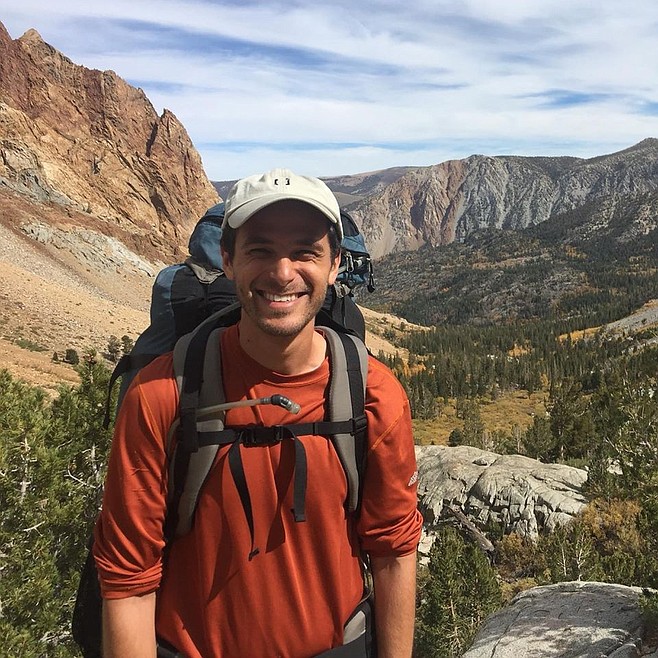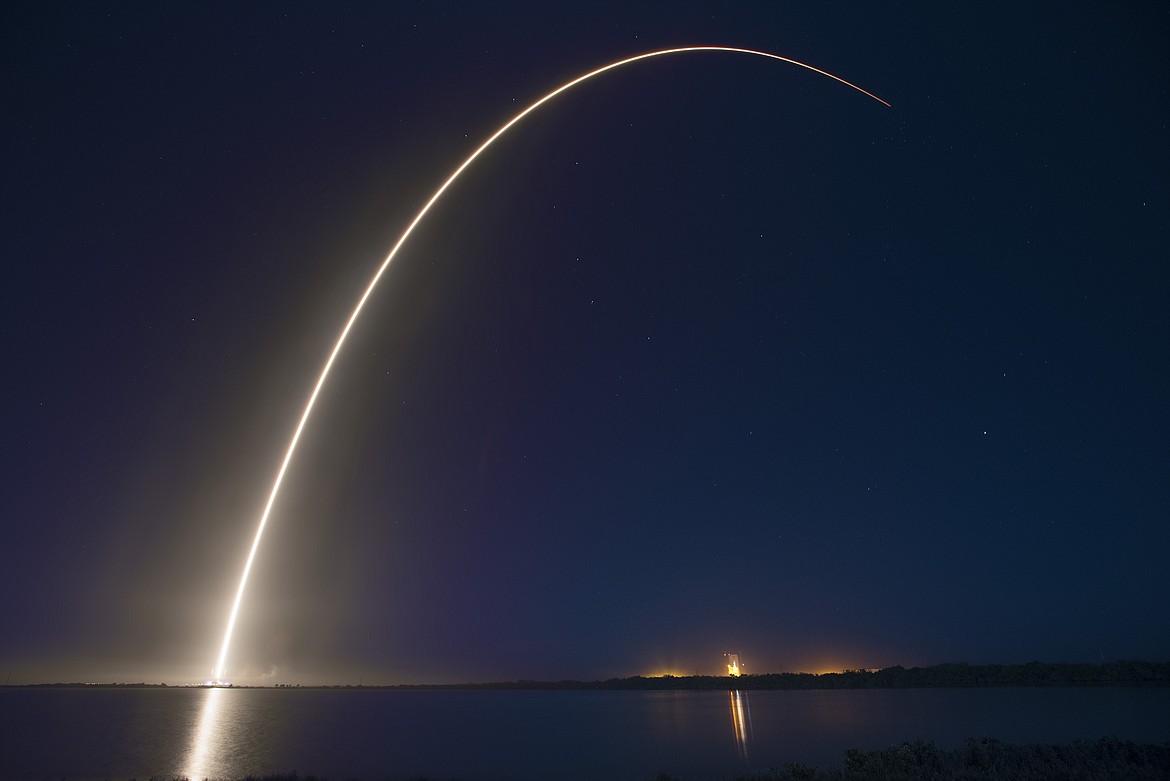SpaceX engineer Katz helps put Americans in space
BONNERS FERRY — SpaceX senior guidance and navigational control engineer Jacob Katz is a role model for area students who aspire to become involved in science, technology, engineering and mathematics.
Katz’s involvement includes some of the most innovative and forward-thinking projects that have pushed forward progress in science. Most notable is SpaceX’s Falcon-9 rocket.
Katz, who grew up and attended school in Bonners Ferry, is involved with work that creates a pre-planned route calculated ahead of time that optimizes and finds the shortest path between two points, using sensors to infer things about the location and which direction a device is pointing to; use of real-time steering to drive a system toward a target or follow a path. Control takes a signal from navigation and a target from guidance and tries to make them the same.
Utilizing these three elements, Katz can build software that can fly a vehicle or analyze its expected behavior. In his role at SpaceX, he develops supportive software to tell the rocket where it is, the path to follow to where it needs to go and how to change its direction to follow that path.
A critical role Katz plays is the “responsible engineer” role, which allows Katz to design and develop the trajectory a rocket will fly into space.
“I get to work on most aspects of a mission, from initial negotiations with customers, all the way through to the final countdown,” Katz said. “Always awesome after a flight to see long exposure traces of the characteristic swoosh and know you made that shape.”
According to Katz, he has been on the console as a GNC, mission control operator for over 30 SpaceX flights.
Milestone flights include F9-21 Orbcomm-2: First landing, F9-23 CRS-8: First drone-ship landing, F9-32 SES-10: First re-flight of a booster, FH-1 Heavy Demo: First flight of Falcon Heavy and F9-81 Demo2: First flight of astronauts.
Falcon-9 is one of the first rockets to take a payload — such as astronauts or satellites — to space using a two-stage system with reusable elements.
“Falcon 9 is unique among all other rockets in that following stage separation, the first stage returns to Earth, either landing back near the launch site or on an autonomous “drone-ship” floating in the ocean,” Katz said.
Falcon-9s two-stage system allows for the returning first-stage boosters to be used for multiple missions and allows for significant cost savings when launching into space because of the reusing of boosters; the boosters have been used as many as five times in different missions.
“After landing, we are able to reuse the boosters for future flights instead of needing to build a new first stage for every flight,” Katz said.
The Falcon-9 missions have received much media attention for launching a Tesla roadster into space, sending Starlink satellites with the plan to provide high-speed internet from space and launching Doug Hurley and Bob Behnken — who will return to earth the second of August — to the International Space Station on the first crewed mission.
All these SpaceX achievements have advanced science and technology, and Katz was a vital part of that team.
Katz became an engineer with many influences in his childhood which helped shape his career path.
A fascination for children’s mystery books forced Katz to focus on details and always observe.
As Katz reflects on his childhood, “When you start paying close attention to everything around you, a natural fascination develops with how everything ticks.”
In the third grade, a young Katz went on a family trip to the Kennedy Space Center in Florida. The trip would leave a lasting impression.
An impressionable Katz saw launch pads, vehicle assembly building, a Space Shuttle mockup, and rockets on display at the visitor center.
“I came away from that wanting to know everything about space and rockets,” Katz said.
A gifted rocket model kit and a friend equally excited about rockets led to designing and creating rockets during leisure time for Katz, but when teacher Hugh Maxwell, who also had a passion for space, helped foster a deeper understanding of flight and space.
These events would push Katz to pursue becoming a pilot, but those dreams ended when he learned that colorblindness was a disqualification for pilots; the disqualification allowed Katz to discover a passion for how flying objects work and find a career within that field.
Reflecting on his realization, Katz said, “Once I found out there was a profession centered around that work, it became more clear I wanted to become an engineer and eventually an aerospace engineer.”
Growing up in Bonners Ferry, the praise for academics was not always a priority, but many individuals helped foster academic success in Katz’s time living in Bonners Ferry; he was guided by people in the community who took a particular interest in teaching and nurturing his curiosity.
Family friends like Julien Bucher (who passed away in 2007) and a local farmer inspired Katz during an evening looking at stars. The encounter inspired a college application essay.
Having two educator parents and one who taught science significantly helped to influence STEM upon Katz.
During a period of applying to universities with aerospace engineering programs, Katz considered the Massachusetts Institute of Technology for being a leader in engineering.
The college events would lead to research that involved synchronized volleyball-sized satellites that remotely worked inside the international space station.
These events led to setting up a competition with local students to write programs to compete in a virtual game that involves flying the satellites inside the space station.
After college, Katz applied to SpaceX before finishing his Ph.D. thesis and quickly hired. After six months, Katz began his groundbreaking career.
The community’s praise of Katz leaves him with mixed feelings as he hopes the country can come together to solve problems such as global climate change; he wants the country to respect and incorporate science.
The ultimate hope for Katz is that SpaceX can help to inspire young people and pursue a career in the science and engineering career fields, encourage a broader appreciation for the role of science and technology as a basic skillset.
In stark contrast to his upbringing, Katz feels the school system has slowly eroded to provide fewer opportunities for students than he was once afforded.
“There are many systemic problems, including poor payment of teachers, a lack of focus on academics as a whole, and a constant battle with the community over funding.” Katz said, “I am proud of my past and endlessly grateful for the people who have made my future possible. May we aspire to give the young people of our county the same awesome reach.”



